- Home
- Encyclopedia
- Newspaper War In Paradise: A 30-year Conflict I...
Newspaper War in Paradise: A 30-year Conflict in Jackson Hole
When the war broke out in Jackson Hole, most people had their money on the hometown hero to win. He had easily warded off any challengers before, and the townsfolk were dead certain he was unbeatable.
But sure enough, like many wars in the West, a newcomer appeared on the streets of Jackson Hole and said, "Not so fast."
The battle seemed endless at the time and eventually lasted 30 years. No one had seen anything like it in such a small but prosperous town, and when the dust settled and a winner finally emerged, many were shocked at the outcome.
There had been newspaper wars before, of course, but not many in the late 20th century. It was an intense, no-holds barred struggle between the Jackson Hole Guide and the Jackson Hole News. Readers had been loyal, but soon other industries began competing for their attention. The two sides fought for readers' hearts and minds, and even though it wasn't bloody, a lot of sweat and tears were shed by publishers, editors and reporters on both sides.
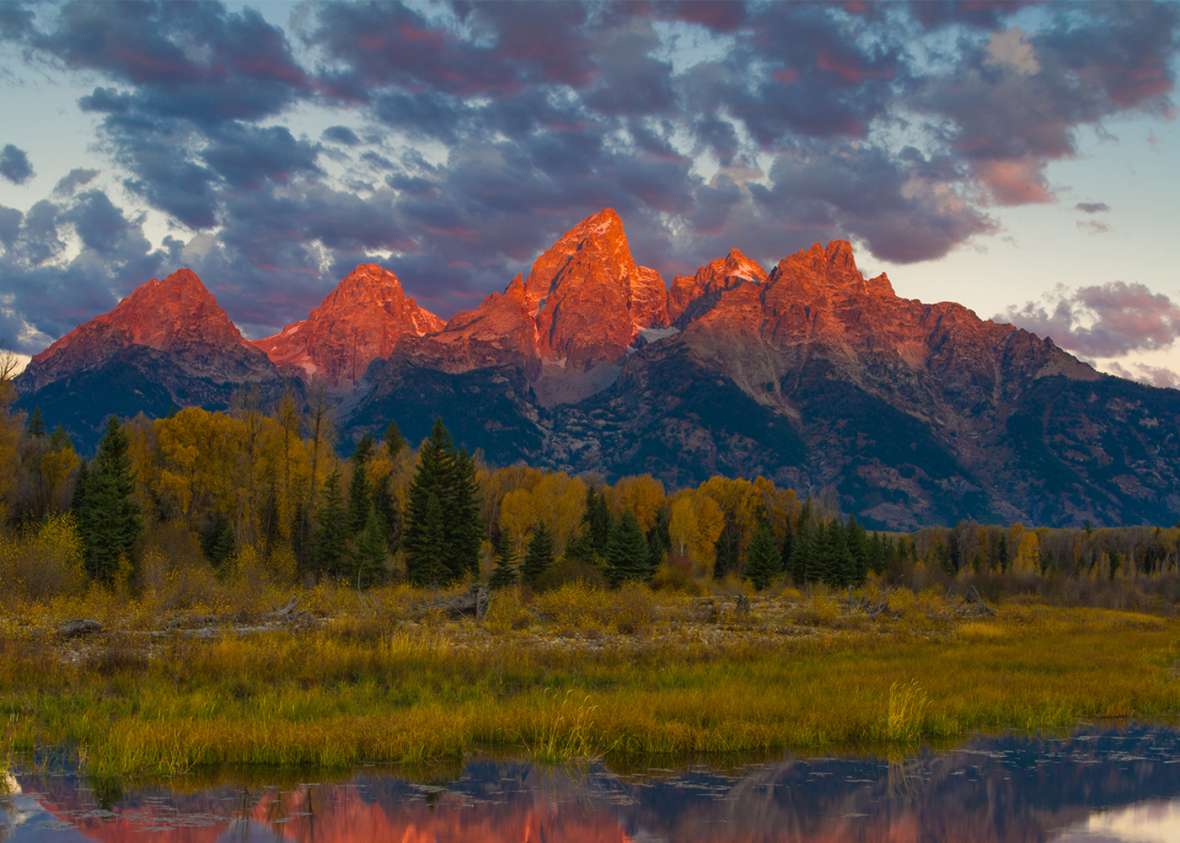
Unhappy with paper's coverage
In 1970, the Jackson Hole Guide was the established newspaper in the small town, nestled at the southern end of a valley between the Hoback Range and East Gros Ventre Butte. Jackson only had 2,688 year-round residents. But the town hosted hundreds of thousands of tourists each summer who spent lot of money in its shops, saloons, ski areas and restaurants.
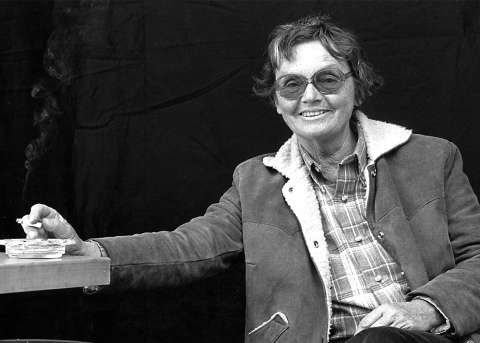
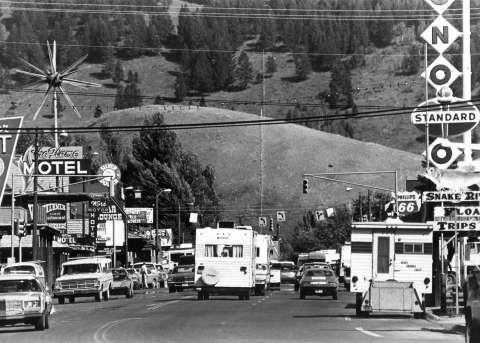
The first newspaper in the area, the Jackson Hole Courier, began publishing in the early 1900s. The Guide was born in 1956, and Floy Tonkin and William Kirol had dual roles as owners and editors.
The Guide was unquestionably successful, but every newspaper has readers who don't like what's being published. The Guide was no exception. Unsatisfied with news coverage and convinced the community needed another voice, local residents Virginia Huidekoper and Ralph Gill started the Jackson Hole News in 1970. The first issue, on April 17, listed Norman and Jackie Lynes as editors and publishers.
Huidekoper and Marc Fischer—a local woman who bought out Gill's shares in the business soon after the newspaper launched—decided in 1973 that the venture was bigger than they had imagined and taking up all their time. They decided to sell and found the perfect buyer right in their newsroom.
A cub reporter from Chicago
Mike Sellett had been a regular contributor to the Chicago Tribune after graduating from Northwestern University. He came to Wyoming in 1965 to work for the Rawlins Daily Times, and one of his former editors later told him the Jackson Hole News needed a reporter. He was hired in 1972 and six months later he became the managing editor.
When the owners approached him about buying the News, Sellett was interested but had a seemingly insurmountable problem. The 28-year-old didn't have any money to buy it. He also didn't have any business experience and knew he would be facing "an established, extremely well-financed newspaper. I was dead in the water," he said.
The owners solved his financial dilemma when they offered to carry 90 percent of the purchase price. The deal demonstrates how much the pair wanted a local resident to take over the News.
Still needing $10,000 to complete the purchase, Sellett asked a friend, Mike Howard of Scripps-Howard publishing, to look at the financials. He told a disappointed Sellett that the News would never be able to match the deep pockets of the Guide. But Sellett turned to friends and relatives and scraped together the money.
"I don't know why I persisted ... I suppose that I had no place to go," he said.
But the new owner had no doubt that whatever happened, it would be a lively career challenge. "I wasn't walking into Bum---k, Iowa," he recalled many years later when interviewed by an author writing a book about hometown journalism. "This was already a competitive [newspaper] town."
The paper attracted a talented staff, with many members lured by the beauty of the small town and its world-class skiing and other recreation. Sellett said to survive he had to learn "how you can turn editorial excellence into dollars."
Sellett said Cammie Pyle, who had worked at the Atlantic Monthly, was responsible for the award-winning, striking layout of the News, which featured photos much larger than most newspapers.
Richard Murphy was chief photographer. In 1984 he guided the staff to a landmark achievement—the News won the prestigious National Press Photographers Association's "Best Use of Photos" award. The weekly competed against papers of all sizes for the prize, including metropolitan dailies; the next year the organization divided contestants into daily and weekly divisions. It was a point of pride for the News staff that the daily papers thought it was unfair to compete against "the little weeklies."
'Climbing bum' arrives
In 1978, Yale graduate and self-proclaimed "climbing bum" Angus Thuermer, Jr. moved to Jackson. He worked on an oil rig in the winter, but one year when that job fell through he was hired as an assistant in the News pressroom. The job he wanted, though, was in the newsroom, and when there was an opening he had a spontaneous, clever idea about how to land it.
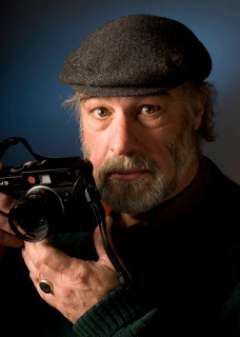
Thuermer and Sellett lived in the same condominium complex. One morning Thuermer managed to lure Sellett's beloved golden retriever to his porch, where he adorned the pooch with a sign that warned, "Hire Angus or else." He signed it "The Phantom."
Amused, Sellett put Thuermer to work in the newsroom as a reporter covering the local education beat. That decision changed the course of the News forever: The new hire helped editorially guide the paper for more than three decades, including a long stint as its managing editor.
Both the Columbia Journalism Review and the American Journalism Review did articles about the intense competition between the Guide and News, which lasted nearly three decades. "It was one of the epic newspaper battles in the United States," Sellett said.
The publisher noted it was a rich town for news content. "We were kind of at the epicenter of all these federal agencies -- Grand Teton Park, the U.S. Forest Service, the Elk Refuge and Yellowstone National Park," he said. "We didn't cover anything outside Teton County but agencies had their headquarters in Jackson, and they were all part of our responsibility."
The competing papers also had to cover local news like school board and city council meetings. "We both had a much broader canvas--not only local stories but ones of national interest," Sellett noted. The owner said Jackson had "an educated, affluent audience. They knew first-class journalism and demanded it."
"We had to serve a schizophrenic clientele," agreed Thuermer. "People wanted to know what the local school board was doing, and they also wanted to know about the latest federal decisions that affected Yellowstone. In terms of newspapering, it was a fantastic community."
The News had a rule of thumb about its coverage of grizzly bear maulings. "It was an automatic front-page story," the editor said. "It was a no-brainer. Whenever it happened everyone was interested in it."
Respect for competitors
Sellett and Thuermer both said that the Guide was a very good newspaper that, like the News, won many state and national awards. "We always thought we were better, but they handed our asses to us several times," said Thuermer, who added that he thinks the competition made both papers better.
The publications were always seeking an edge against their rival. At one time both papers published on Thursday, but the News shifted its delivery schedule to Wednesday to offer more timely coverage of meetings held earlier in the week.
Thuermer said the Guide once raised its price from 50 cents to $1. "We decided not to follow, and they were forced to go back to 50 cents," he noted. Readers seem to have considered it money well spent, no matter how much they were charged.
Sellett said the News's decision in 1988 to begin publishing a free daily paper had a huge impact on the lively newspaper war. Several other resort towns, including Aspen and Vail, Colo., each had at least two free daily papers. Sellett liked the business model because it allowed news to be published when it was fresh, and readers no longer had to wait until Wednesday to discover what happened at a meeting the previous Thursday.
The News' free edition published mostly wire copy six times a week, and local spot news stories written on deadline. The weekly edition, which still charged for its publication, offered more in-depth articles often written about issues that received small attention in the daily. "It upped the ante, so to speak, in terms of the level of competition," Sellett said. In 1996 the Guide launched its own free daily, bringing the number of local newspapers to four.
Of the hundreds of news articles Thuermer has written, he said the 1988 fire in Yellowstone National Park is still considered the biggest story the News ever published. The entire editorial staff was involved in covering the lightning-caused fire from early August until mid-September.
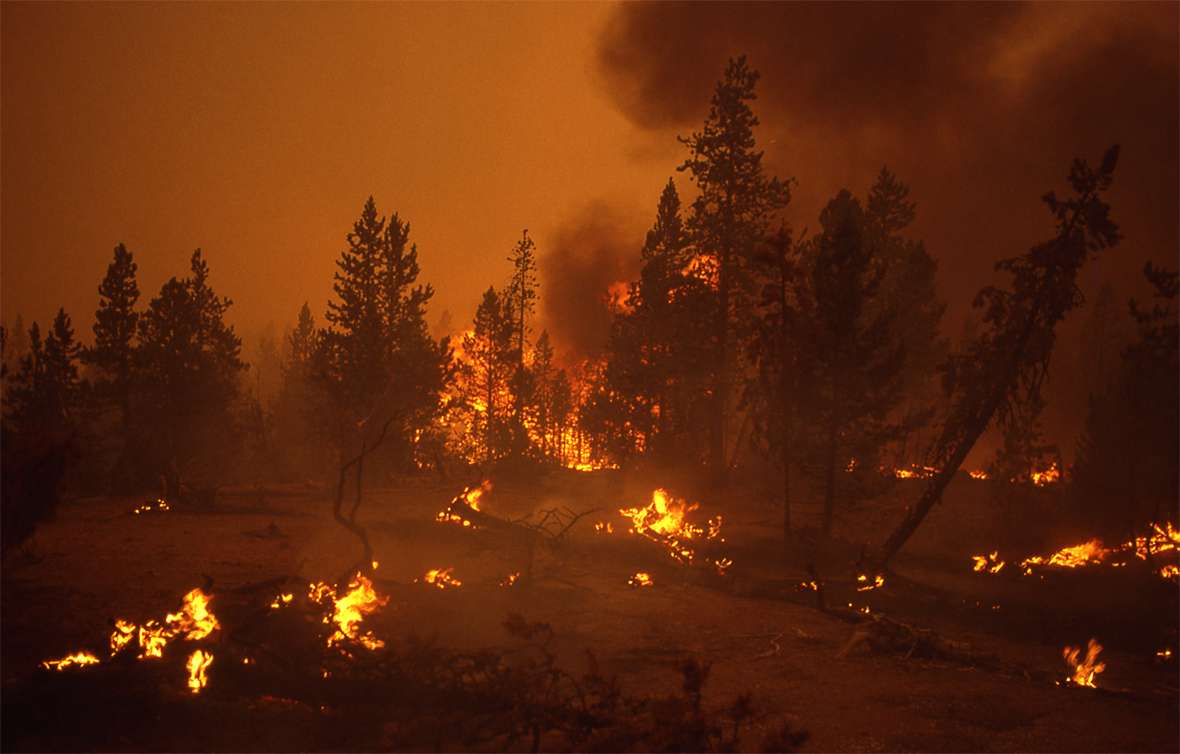
The Yellowstone fires
Thuermer said he was driving to Mammoth Hot Springs, at the north end of Yellowstone Park, early that September. "I was wearing the same kind of yellow shirt the firefighters wore, plus jeans," he said. "Thuermer blended in with everyone at the camp. At 4 a.m. he found himself at the firefighters’ incident command center, where officials from every agency were getting an update on the fire and weather conditions. Included were infrared photos showing where the fires were at night.
"I hung out there drinking coffee with the bigwigs," Thuermer recalled. "They heard a grim weather forecast and these people were ashen as they listened. ... It was really an incredible scene."
But as fire officials prepared for the worst, a storm front came through and accomplished what $100 million in firefighting costs had not been able to do. One storm came in and put it all out.
It was a historic day in Yellowstone, and Thuermer was there to document and write about it for the News.
"It was the biggest story in the nation and our small staff [based 100 miles away] was able to stay on top and cover it," Sellett said. "This was before cell phones, the Internet and ways to send text and pictures back to the newsroom. It was pretty primitive from today's perspective."
He credited Thuermer with coordinating the Yellowstone fire coverage, and said his managing editor used his environmental reporting experience to help give News readers a better understanding about how the fires were affecting the ecosystem.
Wolf reintroduction
Thuermer has good memories of another major wildlife news story he began covering in the mid-1990s. The reintroduction of gray wolves to the Yellowstone ecosystem was extremely controversial, with Wyoming ranchers and state government on one side and U.S. Fish & Wildlife officials representing the federal government on the other.
He said he will never forget the sight of then-Secretary of Interior Bruce Babbitt carrying the first wolf to be put in a pen to be reintroduced to Yellowstone National Park before it would be released about six months later.
"It surprised me how much controversy that story generated," Thuermer said. "I didn't understand the deep-seated hatred for predators in Wyoming."
Building a news staff
The publisher said many of the employees at the paper came to Jackson Hole first and foremost for its abundant recreational opportunities, not jobs. He recalled that his chief photographer, Richard Murphy, was working as a carpenter when he showed Sellett some photos he had taken.
"I said, 'You have a job,'" Sellett remembered. "It was not about recruiting high-priced sophisticated journalists. We built [the staff] with the material we had."
What was Sellett like at work? "Michael was a good boss. He gave me a long leash," Thuermer said. "He had a lot of insight and a good perspective [on the world], but he had fun. He didn't kowtow to the powers that be. He was irreverent, but he was serious about news and serious about writing."
Asked when he thought his paper had turned the corner financially, Sellett said with the Guide as his competitor he was never complacent. "I knew I wasn't comfortable, but I was making enough money that we could handle a little bit of adversity," he said. "You're never sure—you’re only as good as your last paper."
Something unexpected happened in 2002 that surprised both Sellett and many readers. He had made some overtures about buying the Guide over the years, but was always rebuffed by owners Fred and Elizabeth McCabe.
After McCabe died in 1997, his widow took over the Guide and Sellett sensed she was struggling to manage it on her own. "Her editor approached me and said they would like to do something together with the News," Sellett said. "I was shocked. Fred never even talked to me once in 30 years or even acknowledged I was around."
Over a top-secret dinner at his house, Sellett said, preliminary talks began. "It all came together rather quickly," he said of the deal.
But many readers were upset when in November 2002 the merger was announced and their only choice of papers was the newly combined Jackson Hole News&Guide. "They had the perception that they had two voices and had lost one of them. But we really agreed on a lot of key issues," Sellett said. "Our editorial policies by that time were fairly close."
When the papers merged, the News was the dominant paper in town. Its circulation was 7,100, about 2,000 more copies than the Guide sold each week. Sellett said the appearance of an alternative weekly, Planet Jackson Hole, actually helped the situation. "It was perceived as restoring at least some level of competition," he explained.
Sellett decided to sell the News&Guide in 2012 and, like Huidekoper and Fisher 39 years earlier, sought a local buyer. "I didn't want to sell to a chain," he said emphatically. "I decided I would rather take less money and have a buyer who lived here and worked here instead of someone who showed up with an armored truck and then made the News part of some homogenized chain."
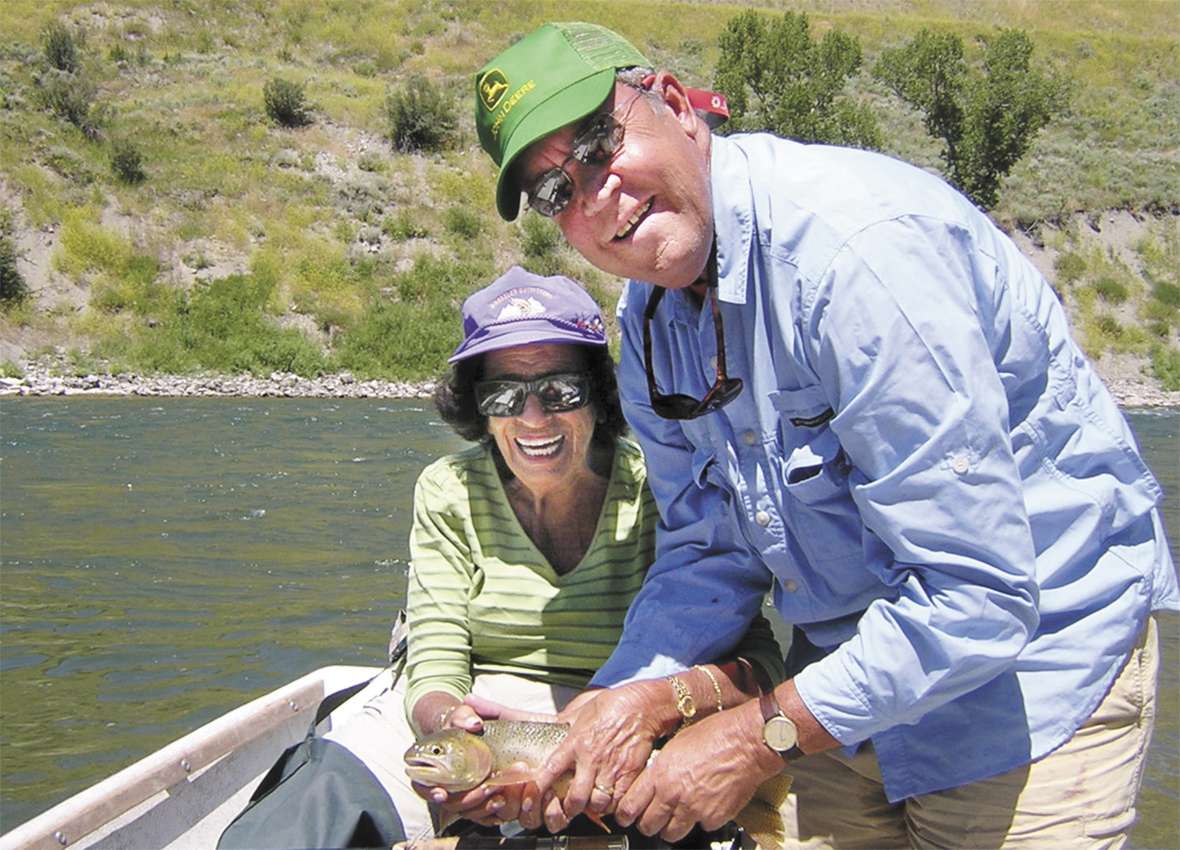
Wanted: A local buyer
He found his local buyer—Kevin Olson, the chief operating officer of the paper for 11 years. Sellett offered Olson and his wife Shelley the opportunity to buy the paper.
"It was important to me that the newspaper remain in local hands,” Sellett said. “Since taking over management of the newspaper, Kevin and his family planted deep roots in this valley, and he has become an outstanding leader in the business community."
Sellett said the legacy of the News&Guide and the hard-fought newspaper war was due to the efforts of hundreds of editors, reporters, photographers, salespeople, artists and production personnel who worked for the now-united publications.
“Together we tried to produce a newspaper that not only covered the news events of the week," he said, "but provided a window into the lives of the hardy souls who shaped the history of Jackson Hole as well as those who offered a vision of how this community would take control of its future.”
After the sale Thuermer agreed to stay at the News&Guide but quit about six months later. "I discovered after many years of working at a wonderful, dynamic paper with great colleagues, I found myself doing more and more administrative stuff and less journalism."
Thuermer became a reporter covering northwest Wyoming and brought to WyoFile, a public policy and news website, his institutional knowledge of his favorite beat—the environment, wildlife and conservation efforts. "I'm honored to work for WyoFile," he said of his new journalism home.
Meanwhile, Sellett retired in 2014 and now splits time between Jackson and Santa Barbara, Calif. He said he's having a happy retirement, and his tone was upbeat.
"The paper is in good hands," Sellett said. "I read it every week and I'm just glad I no longer have to worry about what to put in it next week."
Resources
- Associated Press. “Jackson Hole News, Guide Will Merge,” Billings Gazette, November 14, 2002, accessed Jan. 26, 2017 at http://billingsgazette.com/news/state-and-regional/wyoming/jackson-hole-news-guide-will-merge/article_12e56d8f-9037-5cca-bc92-14b2eb9cc993.html.
- Boner, Bradley J. “Legendary line: Forty-five years ago, a photograph documented ski mountaineering history,” Jackson Hole News&Guide, June 15, 2016, accessed Jan., 26, 2017 at http://www.jhnewsandguide.com/valley/feature/legendary-line/article_4c1c332d-06bb-57a5-b8fb-ffc00693ef0b.html.
- Roberts, Gene. Leaving Readers Behind: The Age of Corporate Journalism (University of Arkansas, 2001), 91-103.
- Stanford, Jim. “Thuermer stepping down as News&Guide editor,” JH Underground, April 24, 2014, accessed September 2016 at http://www.jhunderground.com/2014/04/24/thuermer-stepping-down-as-newsguide-editor/.
- Thuermer, Angus. “Paper Set to Change Hands,” Jackson Hole News&Guide, Dec. 19, 2012, accessed Jan. 24, 2017 at http://www.jhnewsandguide.com/news/top_stories/paper-set-to-change-hands/article_7f5abb3c-96df-57b4-b78c-f57b907f60e9.html.
- U.S. Bureau of the Census, Historical Decennial Census Population for Wyoming Counties, Cities. 2010, accessed December 10, 2016, http://eadiv.state.wy.us/demog_data/cntycity_hist.htm.
Illustrations
- The photo of the Tetons is from a Grand Teton National Park page on NASA’s Earth Observatory. Used with thanks.
- The photo of Jackson traffic is from the Jackson Hole Historical Society. Used with permission and thanks.
- The photo of fires in Norris Geyser Basin, Yellowstone National Park, 1988, is from the National Park Service. Used with thanks.
- The photo of Angus Thuermer is by Price Chambers. Courtesy Angus Thuermer.
- The photo of Virginia Huidekoper is from the collections of the Jackson Hole News&Guide. The photo of Mike Sellett and Liz McCabe is by Paul Bruun. Used with permission and special thanks in both cases to News&Guide photographer Brad Boner.
